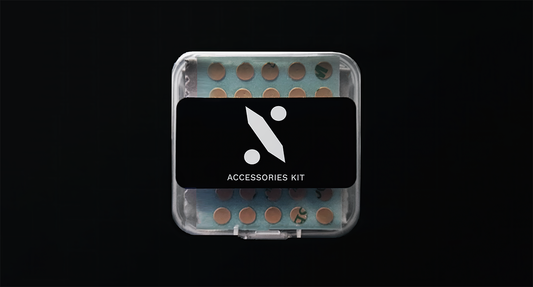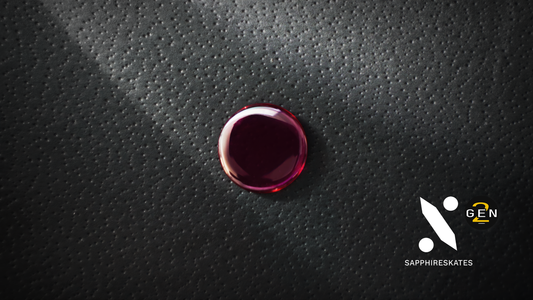Here are some of the most common sources of friction:
TABLE OF CONTENTS
1. Static Electricity Buildup
It's common knowledge that if you rub your feet on the carpet, you can build up static electricity and may experience a shock when it suddenly discharges. The same thing can happen to your mouse and mousepad. If you are using sapphire, luckily it is a good insulator of electricity, so electrons are unlikely to be transferred through it. However, your hand rubbing against the mousepad can build up static electricity and transfer it to the mouse. Of course the mousepad itself, especially if it's a cloth pad, can also build up static electricity.
This might sound like something that isn't a big deal, and to be fair, static electricity is not going to cause your mouse to get stuck on the mousepad. Most materials that gaming mice are made out of are also good insulators, in addition to hard or polycarbonate mousepads. However, static electricity can attract dust, lint, and fur, which can most definitely slow down your glide (more on that in the next section).
How do you fix this? You can simply discharge the static electricity by keeping a metal object nearby. I keep a piece of metal on top of my mousepad to ensure that it is always grounded. You can discharge yourself as well by touching something metal like a doorknob.
2. Dust, Lint, and Fur
Regardless of the type of mouse skates or mousepad you are using, dust, lint, and fur can definitely slow down your glide and lead to a scratchy feeling. With the industry trend of ultra-lightweight mice, sometimes the bottom of the mouse is not completely sealed, which can allow dust and lint to get inside the mouse. However, the most common place for dust and lint to accumulate is anywhere there is adhesive, such as the edges of mouse skates, or any leftover adhesive residue from previous skates. (It's for this reason why we intentionally make our adhesives a little bit smaller than the skates themselves, so that there is no adhesive exposed to the outside.)
Certain skates are going to be more prone to dust and lint accumulation than others. Skates with large surface area require more adhesive, which means more exposed adhesive. If skates don't have a rounded edge, then the edges of the skates allow for dust and lint to get trapped.
How do you fix this? First, ensure that you are properly applying skates. Be sure to remove previous adhesive before applying a new set of mouse skates. When placing the skates, try to avoid touching the adhesive as much as possible. Press down hard enough for the adhesive to spread a bit on the surface, to reduce any gaps.
You can maintain a dust-free environment by regularly vacuuming your mousepad and the bottom of your mouse. You can also use a lint roller, or any sort of sticker (personally, I use the sticky side of shipping labels) to dab out the dust. I notice that G-Wolves gives you a very nice brush with their mouse, which I presume is for keeping dust and lint off the mousepad and mouse. However, I noticed that the soft bristles of the brush can actually accumulate dust itself, so I would just be careful about using a brush like this.
At the end of the day, dust and lint is inevitable and don't go crazy about it. I keep a pair of tweezers nearby to easily pull out any dust or lint that gets stuck on my mouse skates.
3. Water Moisture and Oil
Water moisture is actually everywhere. The entire planet is blanketed by a thin layer of moisture, and therefore it's impossible to have a completely dry environment. But there are other sources of additional moisture that can cause friction, due to the surface tension of water, and the fact that water is a polar molecule.
The most common source of moisture is your hand. Your hand is constantly sweating, and the sweat can transfer to the surface. Sapphire is quite hydrophobic, but excess moisture will still increase friction with the mousepad surface.
Oil is another source of friction. Your hand naturally produces oil, and this oil can transfer to the mousepad and skates. Although oil won't cause the same level of friction compared to water (due to the comparably lower surface tension of oil), it can still cause friction.
How do you fix this? You can wipe down your mousepad with a cloth (something like a microfiber cloth that won't transfer lint). You can also wipe down your mouse skates as well. If you notice any oil residue left over, you can use a bit of isopropyl alcohol to clean it off, but if you don't have that around, a dab of soap and water will do the trick to loosen it up.
Some gamers live in humid environments, such as Florida. In this case, you may want to consider using a dehumidifier.
4. Uneven Surfaces
Parallelism is required to ensure the smoothest glide. While a truly flat surface is simply a mathematical ideal, unattainable in the real world, there are some things you might want to consider. There's actually many variables at play here, but bear with me, and don't sweat it too much.
How do you fix this? It's complicated, but if you're up for it, I'll try to explain it and once you gain an understanding, it's easy to correct for.
First, there are actually four planes of parallelism at play here: 1) the base of the mouse 2) the mouse skates 3) the mousepad and 4) the table.
The mouse base sometimes gets a bad reputation of being uneven. But before you jump to any conclusions, I would highly suggest trying to loosen up the screws if you suspect an uneven surface. As for the skates, we try our best to ensure a tight tolerance within hundredths of millimeters within each set, but if you notice any unevenness, you can simply move the pieces around to find the best feeling positioning. If you have full-coverage skates, this doesn't fix the problem since every part of the skate is not making contact with the surface. In reality, a "3-dot" configuration would ensure the most contact but leads to lateral instability, thus 4 is a good compromise (hence why cars have 4 wheels).
With regard to the mousepad, it depends on the material. The softness of cloth pads actually are more forgiving when it comes to unevenness, due to the intended elastic deformation of the material which increases contact. This is the same concept of F1 drivers actually driving faster on soft tires, because the deformation of the tire provides drastically more grip. On a mousepad however, even though soft pads are more forgiving, they are also simply slower than hard pads.
To address unevenness on a hard pad, there's not much you can do in terms of tweaking the pad itself in case of unevenness.
Tables are not perfectly flat. The weight of your monitor on the table is likely to cause the desk to sag, creating a concave shape which is not ideal for mouse gliding. Regardless of the type of mousepad you are using, you can try to put a piece of glass underneath your mousepad to ensure a flat surface. In fact, chances are you have something you can use in your house right now: a picture frame. Disassemble the picture frame (carefully, and hopefully don't damage any family heirlooms), and remove the piece of glass which you can place underneath your mousepad.
If you are still think you are having problems with unevenness, the mouse skates themselves present an opportunity to make corrections: double-up on adhesive for certain parts to make up for the unevenness, whether it's caused by the table, the mousepad, the mouse skates, or the mouse base.
Another way to balance out a mouse is by adjusting the screws. Simply tighten or loosen certain screws more than others to adjust. Note: this may have side effects such as changing the click tension though. No matter what, be sure not to overtighten screws.
Conclusion
These are a few of the most common problems that can cause friction. Be sure not to overthink it, and don't sweat it too much. At the end of the day, it's all about going by the right feel. That's because there are so many variables at play here, so when someone asks me a general question about "lowest friction", I can't always provide a yes or no answer and resort to writing these long articles instead.
Regardless of the mouse skates or mousepad you use, these tips may help you improve the glide and consistency of your gaming mouse, and hopefully allow you to get more wins.

![SAPPHIRESKATES Gen2 Gaming Mouse Skates [RUBY]](http://sapphireskates.com/cdn/shop/files/sapphireskates-gen2-main-product-with-packaging.png?v=1687476332&width=533)

![HID-Labs Ghost Grip Sheet [Transparent Universal Gaming Mouse Grip]](http://sapphireskates.com/cdn/shop/products/hid-labs-ghost-grip-sheet-mouse-grip.png?v=1665711175&width=533)



